Top 25 things to see in Bern
This post will be following on from my previous post on my day journal of Bern. Bern is the capital city of Switzerland and one of the most cultural and historically enriching cities in Europe. All of the fountains I will write about are part of the UNESCO World Heritage Site of the Old City of Bern - therefore make sure you at least have a look and appreciate their beauty. There are many things to see and appreciate here and luckily, seeing as Bern is quite small, they can easily be seen in a short amount of time.
Top Things to See
Heiliggeistkirche
This church is straight after the station if you turn to your left and go down Spitalgasse. It will be one of the first important things you will see as it is right at the beginning of the itinerary. The Heiliggeistkirche was built as a protestant church in the eighteenth century and is today considered as one of the most beautiful protestant churches of Switzerland. The interior of the church is of baroque architecture with pretty frescos on the ceiling. After having travelled around a lot in Italy, I am very used to Roman Catholic architecture which is very rich in decoration therefore I noticed a very big difference in the interior decoration as here the interior almost looks bare in comparison.
Pfeiferbrunnen
This will be the first of the Swiss fountains that you will encounter on the Spitalgasse. It was sculpted in the sixteenth century by the Swiss Renaissance sculptor Hans Gieng. This fountain features a bagpiper dressed in blue and red. He took his inspiration from Albrecht Dürer’s (artist of the German Renaissance) woodcut of the bagpiper. The fountain has been kept miraculously and you can still see the colour differentiation vividly.
Kafigturm
This is a spectacular medieval tower. This tower, which now is part of the UNESCO Cultural World Heritage Site, was once constructed as a prison. It was in use until 1897 - However since 1999 this tower hosts exhibitions and events relating to political issues. The tower separates the two streets of Spitalgasse and Marktgasse.
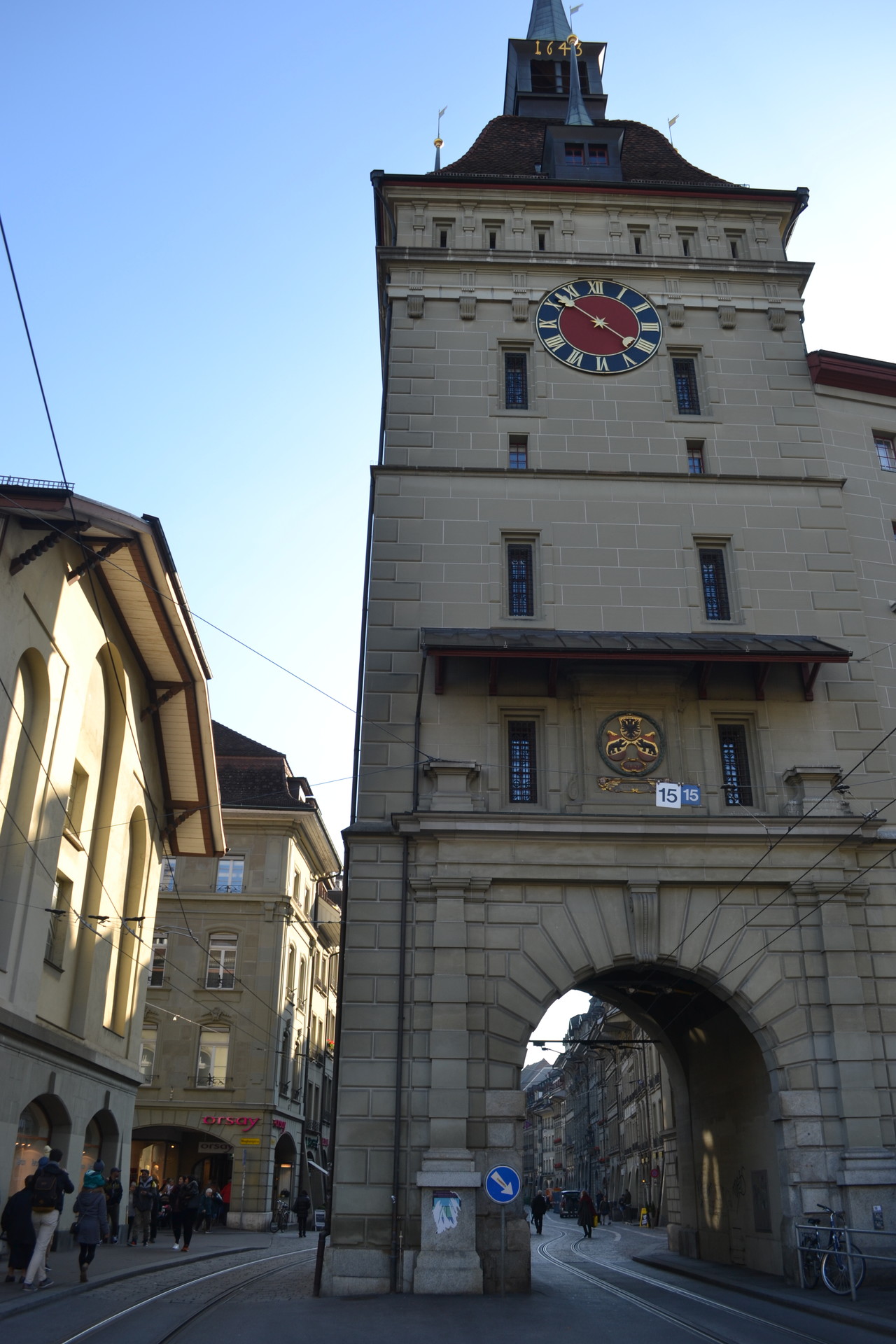
Bärensplaz
On Saturdays you will find the farmers market. We visited during the autumn season therefore it was filled with pumpkins and squash which set a very beautiful scene. They also had a lot of fruit and vegetables available to purchase. Furthermore there were some food trucks such as Jamaican and Mexican which sold delicious authentic food.
Bundeshaus
The Bundeshaus is situated just off the Bärensplaz. This is the building that houses the Swiss Federal Assembly and the Federal Council. This building began to be constructed in 1848 when Bern was declared Swiss Capital and therefore needed a building to house the Parliament. This absolutely stunning building was completed in 1902 - It was the effort of architect H. Auer, however it needed a total of 38 artists for the decorations.
It is possible to visit this Parliament House. For more information on tickets visit its website.
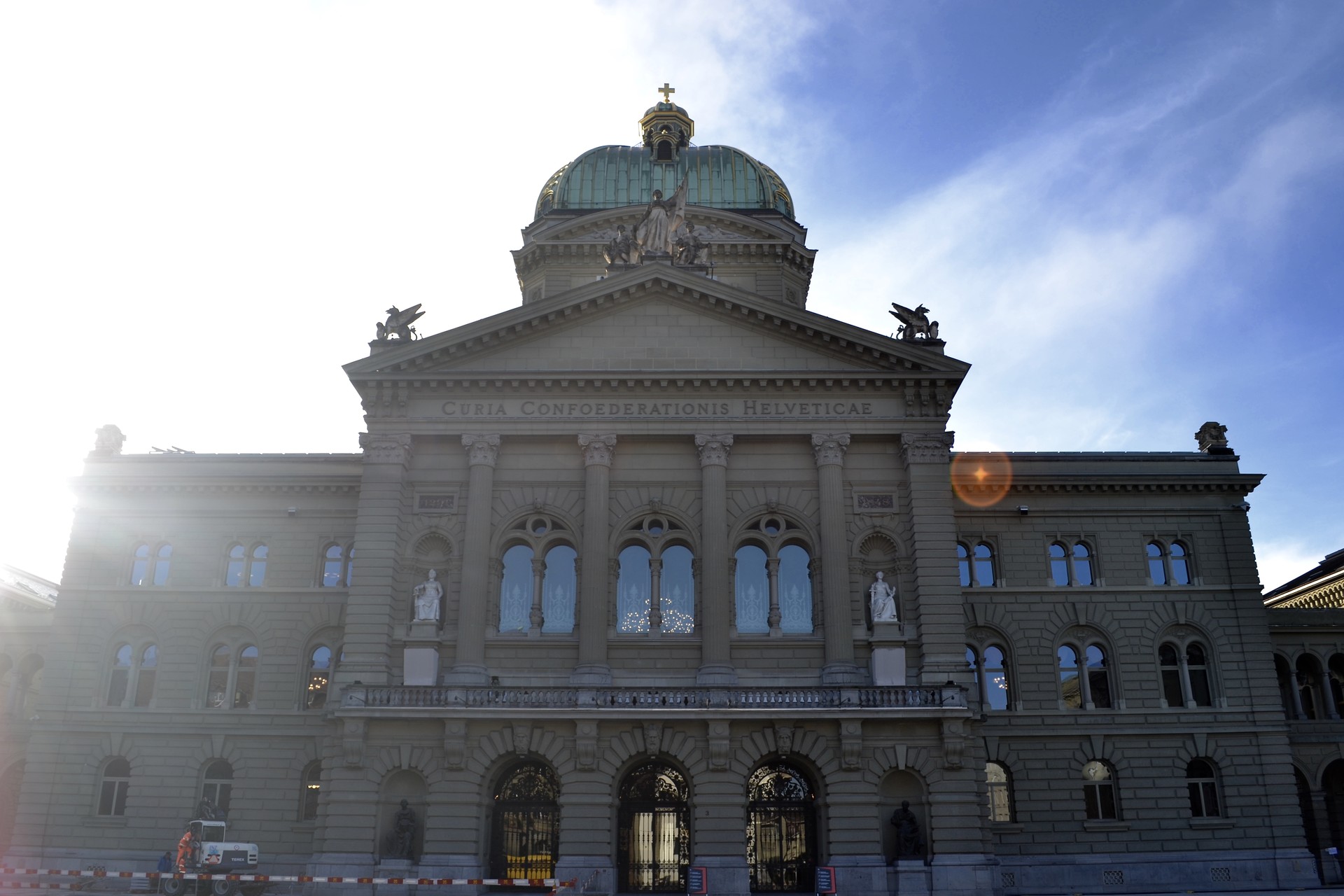
Anna-Seiler-Brunnen
This is another of the famous fountains in Bern which is situated just after the Medieval Prison tower. It represents the founder of the first hospital in Bern in 1354. It depicts a woman dressed in a blue and red robe pouring water into a bowl - It is a picturesque fountain also vivid in its colours.
Schützenbrunnen
This fountain is situated a few metres after the Anna-Seiler-Brunnen. It is located on the Marktgasse. It underwent many changes and was finally finished the way it looks today in 1939. It represents a marksman holding a flag and a sword with a bear standing in between his legs holding a shotgun. This fountain is slightly less colourful than the previous ones.
Zytologgeturm
This is probably my favourite building in Berne. This landmark is a medieval clock tower built in the thirteenth century. It has had quite a few functions for example a prison tower, a guard tower and a clock tower. Both façades contain large important clocks, the first one is the eastern clock face - an elegant black clock with golden roman numerals. The second façade contains the famous astronomical clock which is now part of the UNESCO World Heritage Sights.
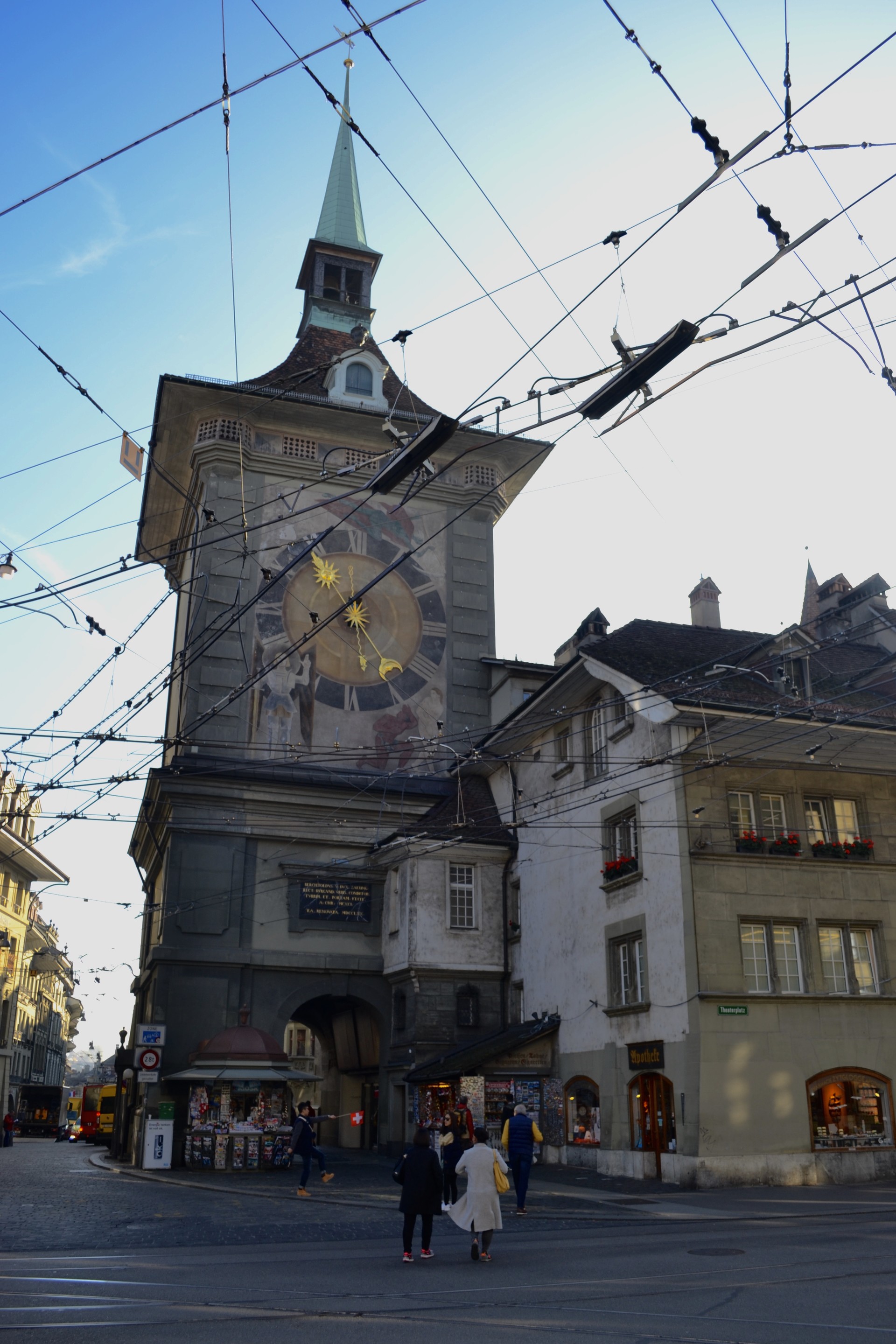
Kornhaus
The Kornhaus is a magnificent building located on Kornhausgasse and built in the early eighteenth century. It was once the granary of the city, however today it houses one of the most elegant and beautiful Italian restaurants of the city. The exterior is a perfect example of late baroque architecture and the interior holds some beautiful frescos that add a touch of culture to your dining.
Kornhausbrücke
One of the things you must do is go on this bridge and take in the spectacular view. If you are going to Switzerland for the first time then you will be stunned as I do not think any other European city (and non European) can compare to this view.
Klindlifresserbrunnen
As you may guess from the words "brunnen" the Klindlifresserbrunnen is another of the famous sixteenth century fountains. Created by Hans Geing, this one however is slightly more twisted than the others as it represents an ogre in green and red who is in the midst of eating a naked child whilst on the side of him there are other children kept presumably waiting to be eaten.
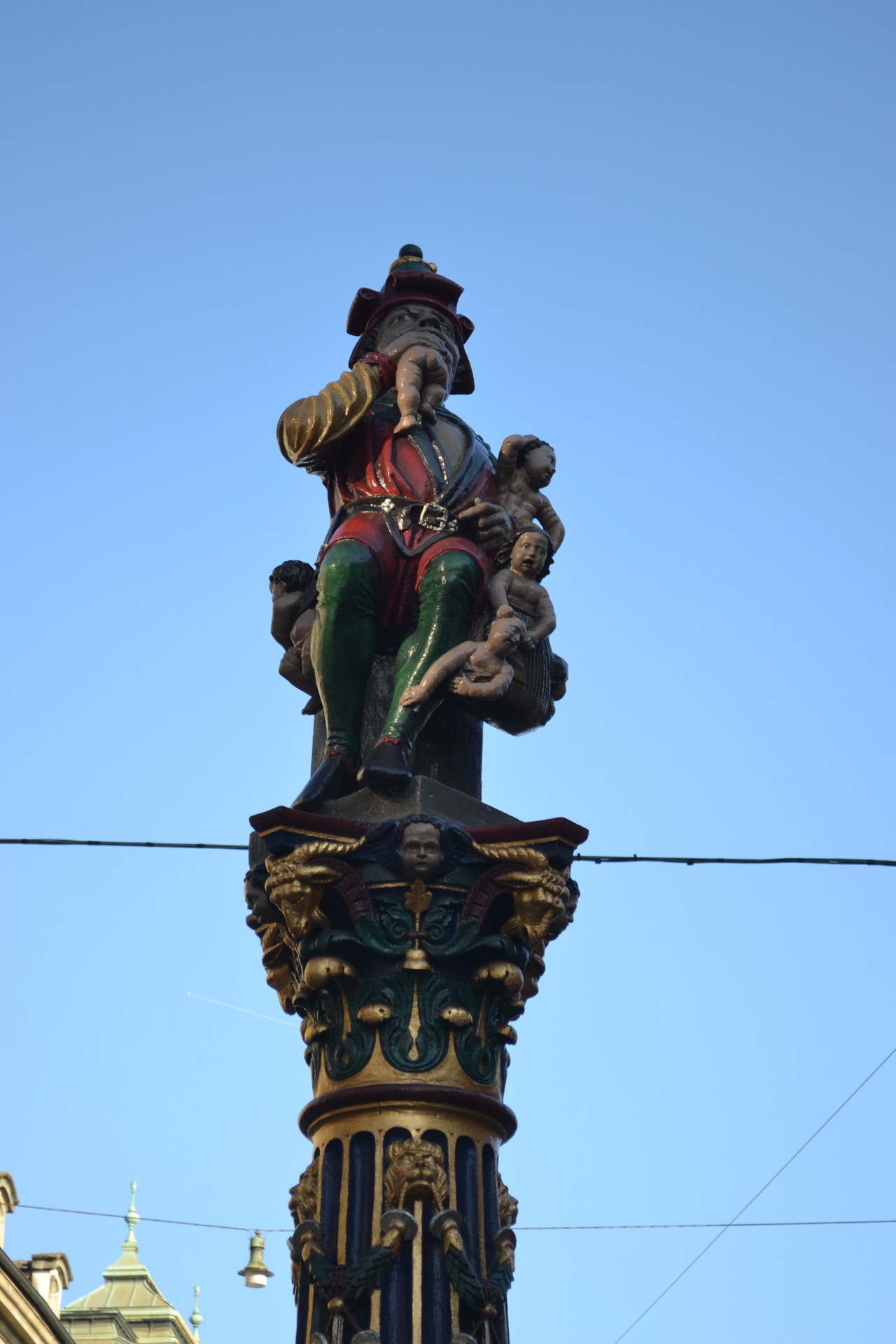
Zãhringerbrunnen
This spectacular fountain was built as a memorial for the founder of the city Berchtold von Zähringen. It portrays a bear dressed in armour with a small bear cub at its feet.
Einsteinhaus
This is where the famous scientist Albert Einstein rented out for two years in the beginning of the 1900's. It is located on Kramsgasse n. 49 and has been reconstructed in order to depict Einsteins life whilst living in Bern. It was in this house that he came up with his famous Theory of Relativity (the law of gravitation and its relation to forces of nature). Students pay 4. 50 CHF and you can buy your tickets straight at the house but for more information have a look at their website.
Simsonbrunnen
This fountain is a beautiful vivid fountain portraying the biblical story of Samson killing a lion. In short, the story narrates Samson, a son of a Israelite who has led a very strict life. Because of the fact that he has kept strictly to the Israelite traditions he is given strength. On his way to marry the love of his life, he is attacked by a lion - but with his big strength is able to kill the lion. This fountain is part of the UNESCO World Heritage Site of the Old city of Bern.
Gerechtigkeitsbrunnen
This famous statue was built in 1543, and it represents the Lady of Justice holding scales and the sword of truth. She is blindfolded and dressed in a beautiful blue dress and a decorative golden suit of armour. This fountain is probably one of my favourites simply due to the meaning behind the fountain - it symbolizes the notion of equality before the law.
Berner Münster
This is a beautifully architected Gothic cathedral begun to be constructed in 1421 and completed in 1893. This is a spectacular monument and known as the tallest cathedral in the whole of Switzerland. The Cathedral is composed of three large portals all decorated in a different way. The main and most important portal contains sculptures of the Last judgement. There are 47 large sculptures which are copies (as the originals are housed in the History Museum of Bern) whilst the 170 small statues are all original. The intricate and beautifully decorated main portal is worth spending time to admire in detail. The interior of the cathedral is composed of three naves; The Gothic architecture means that the central nave is taller than the other two and there are beautiful stained-glass windows allowing the light to fall through.
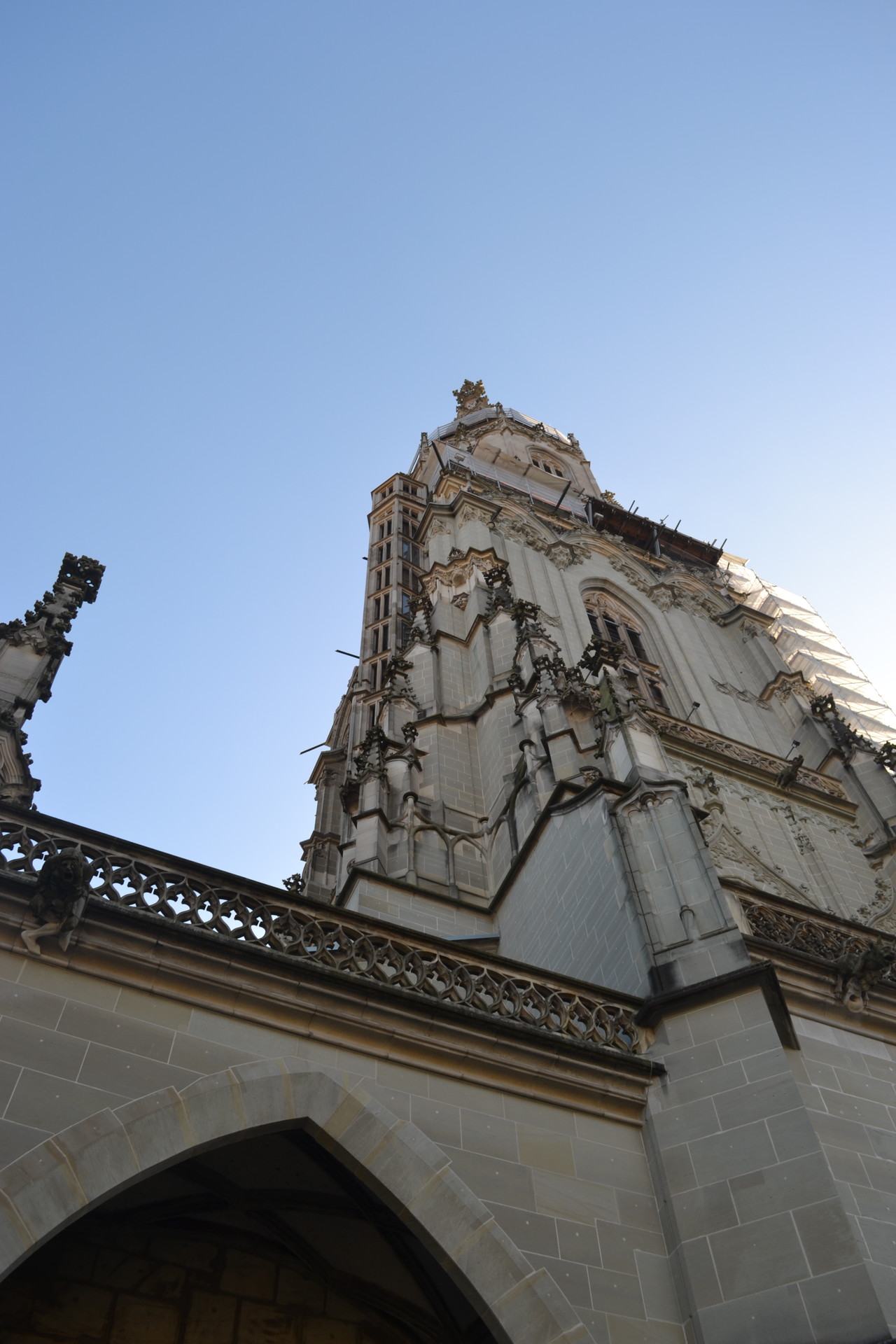
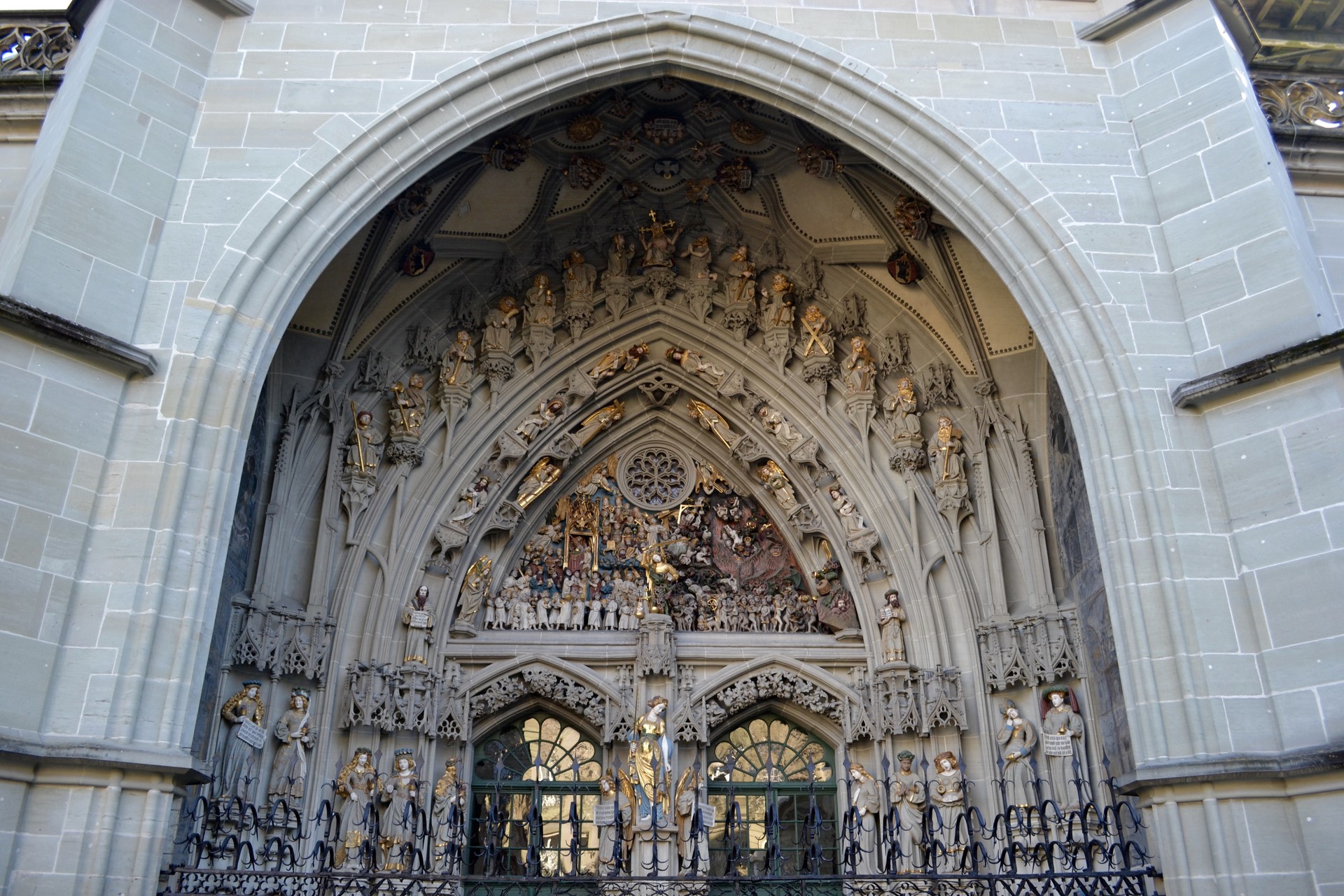
Mosesbrunnen
This sixteenth century fountain represents Moses bringing the ten commandments to the tribes of Israel. It is a beautifully detailed fountain located on the Münsterplatz in front of the Berner Münster.
Münsterplattfrom
This is a park located behind the Berner Münster. From this park you will have a fantastic view over the left part of the city looking over the Aare river and the dams. It is a spectacular spot for photos so be sure to stop by.
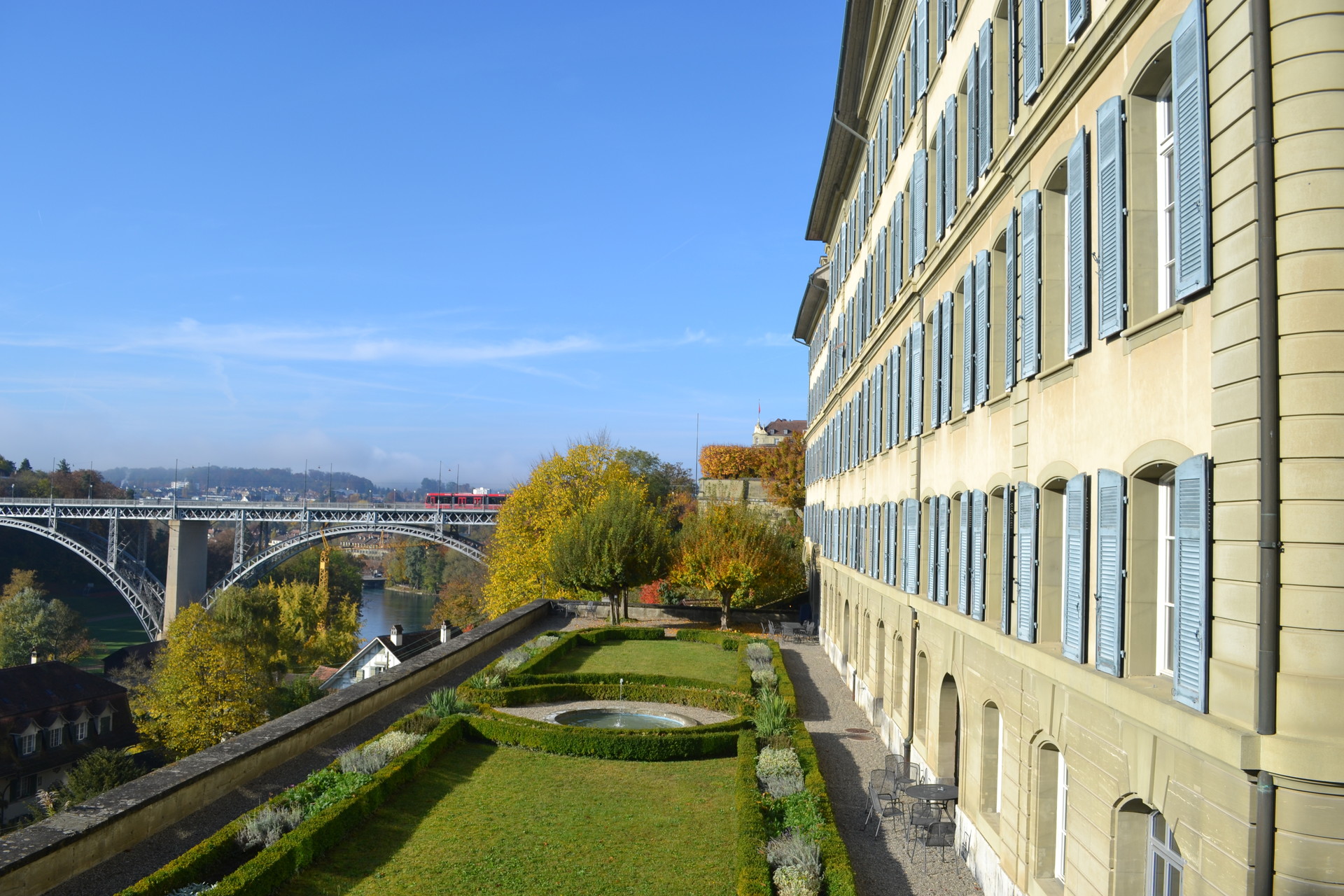
Nydeggbrücke
This bridge connects the city centre to the outer parts of Bern and in order to go to the Bear Park you will need to cross this bridge. It is from this bridge that I had the most spectacular view of the residential part of Bern's city center. All the little houses seem to be randomly positioned on the valley. It is also a good spot to admire Bern's sandy limestone architecture.
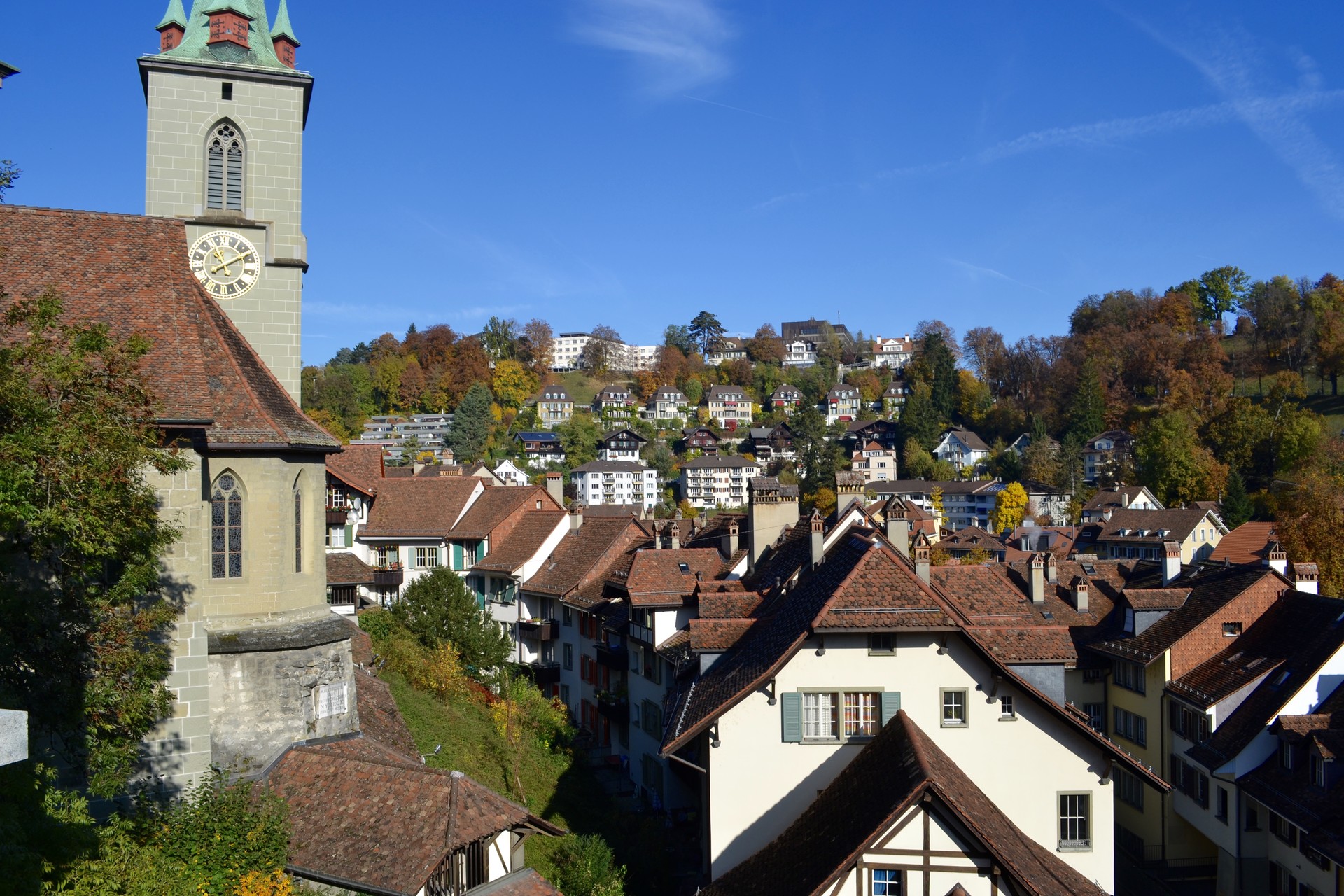
Bärenpark
Bears are the landmark and emblem of Bern; It is said that bears have been kept in the city since the early sixteenth century. The Bärenpark is the most recent bear enclosure opened in 2009 and it is home to one large grizzly bear. Luckily now the space is as big as 6000 sq metres and is an open air riverside park allowing the bear to have enough space. This "attraction" is open everyday and is free to have a walk around.
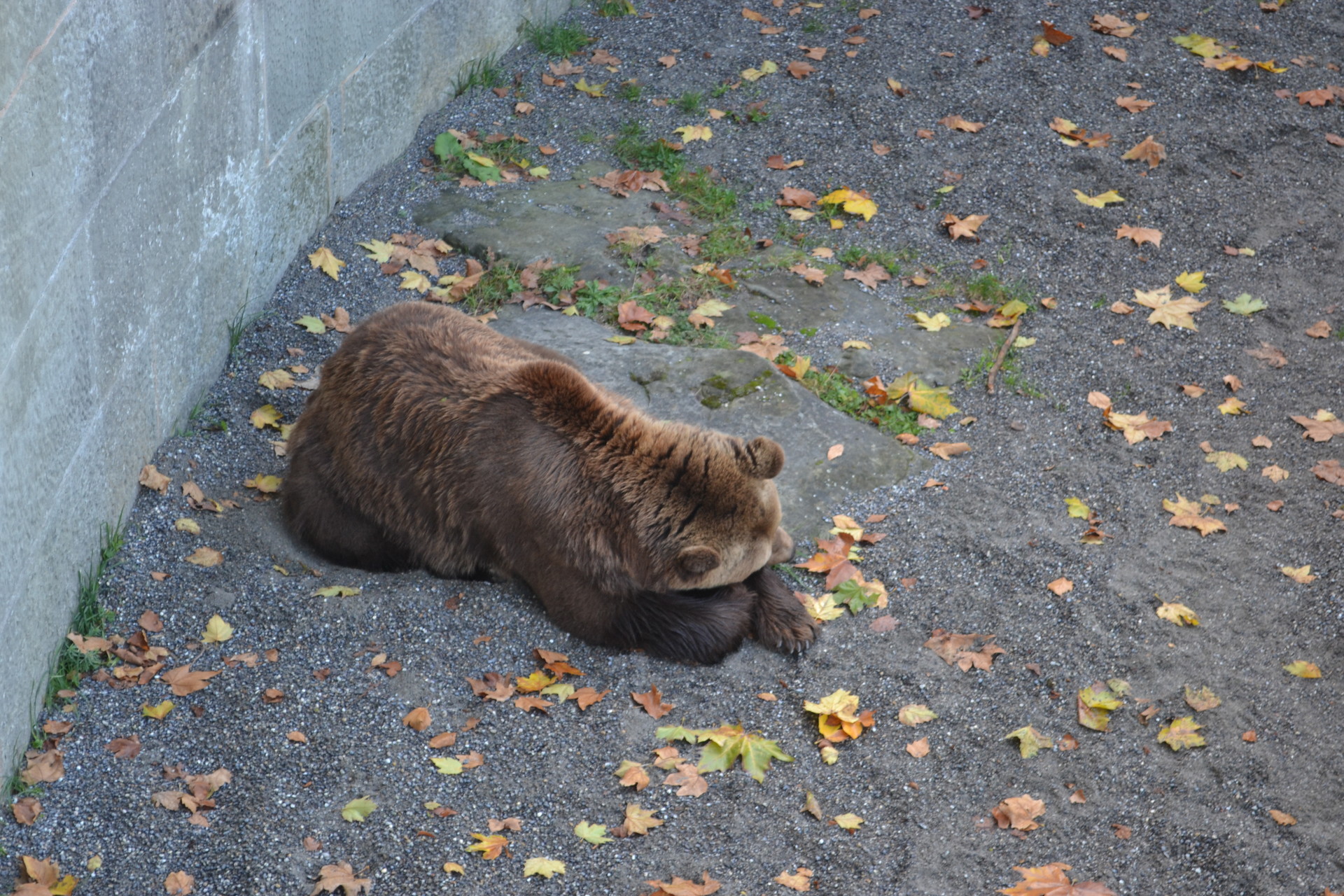
Bernisches Historisches Museum
If you have longer than a day to visit Bern, then you will want to come to the History Museum of Bern. This is the second largest Historical Museum in Switzerland and contains in it's permanent exhibition a long history of Swiss heritage dating from the early Middle Ages until the twentieth century. It also contains collections from the Stone Age, the Celtic Age, the Romans and an interesting exhibition on the diversity of cultures in America.
For more information on this museum, visit their website.
Rosengarten
The main time to go and see the Rosengarten is in Spring, as it is then that you will see the garden filled with beautiful coloured roses. However, I went in Autumn and the warm coloured leaves were good enough for me. Rosengarten offers a fantastic view over the city - you can get here on the number 10 bus from Bundeshaus to Rosengarten.
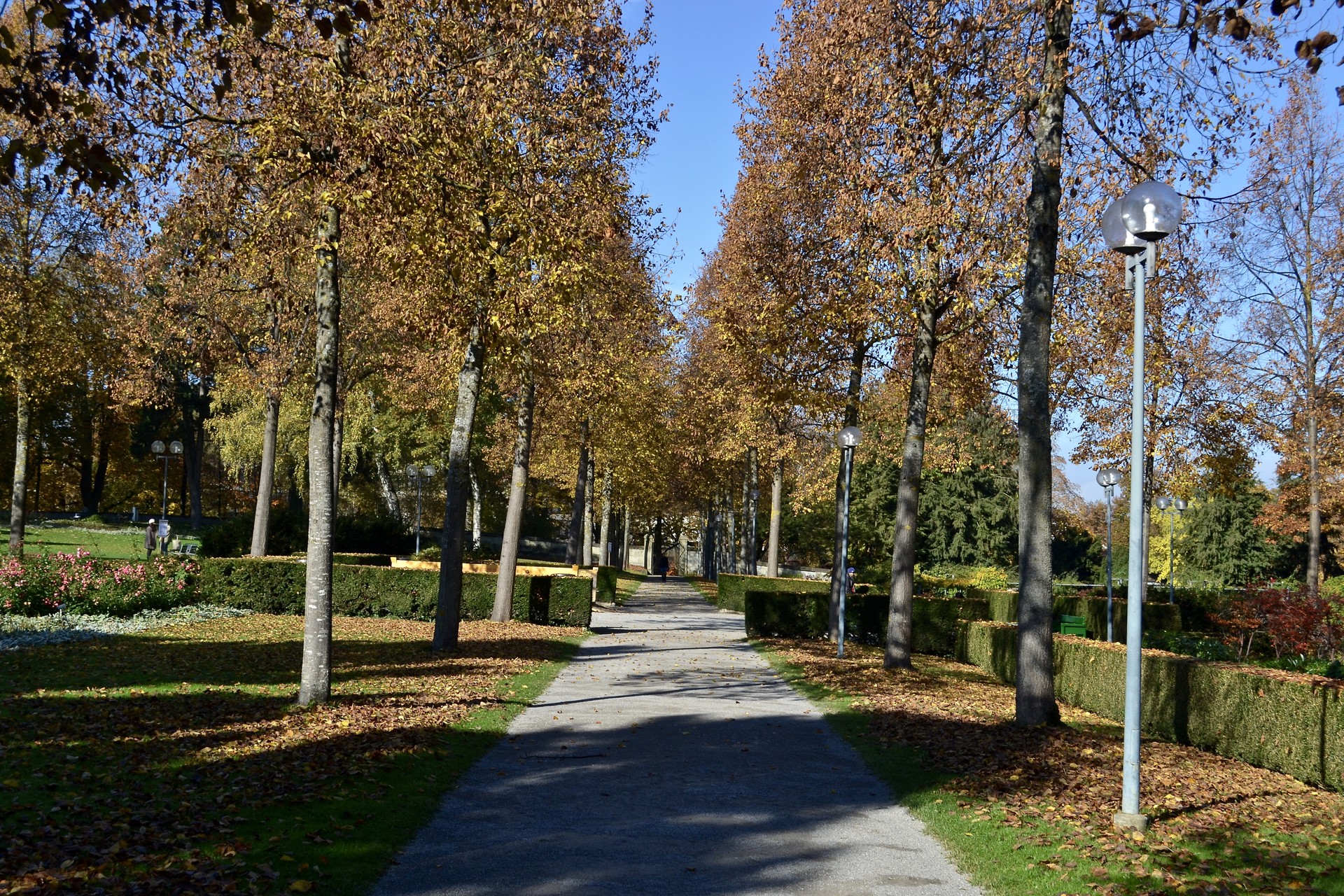
Botanical Garden
The botanical garden in Bern is a magical enchantment of nature. It contains almost 6000 different species of plants varying from Asia, North America and Switzerland. They also have little greenhouses that adapt to the correct tropical temperature allowing Palm trees and other tropical species to grow. To reach the botanical garden take the bus number 20 from Banhofplatz to Gewerbescule.
Natural History Museum
The Natural History Museum in Bern was founded in 1832 and contains around 4 million objects. It is located on the southern part of the city just behind the History Museum. Entrance costs 6 CHF for students and 8 CHF for adults.
For more information on the Natural History Museum take a look at their website.
Swiss Alpine Museum
The Alpine Museum of Bern is nothing like the usual museums you find in capital cities. This museum aims to raise awareness of the effects of climate change on the Alpine Resevoir of Europe. It is a museum dedicated to the nature and culture of Swiss Alps holding an interactive platform that serves as a way of instructing and teaching. It is a fun way of learning about the beautiful mountains surrounding us.
For more information on this museum, have a look at their website.
Photo gallery
Content available in other languages
- Español: 25 cosas que ver en Berna
- Italiano: Le 25 cose migliori da vedere a Berna
Want to have your own Erasmus blog?
If you are experiencing living abroad, you're an avid traveller or want to promote the city where you live... create your own blog and share your adventures!
I want to create my Erasmus blog! →
































Comments (0 comments)